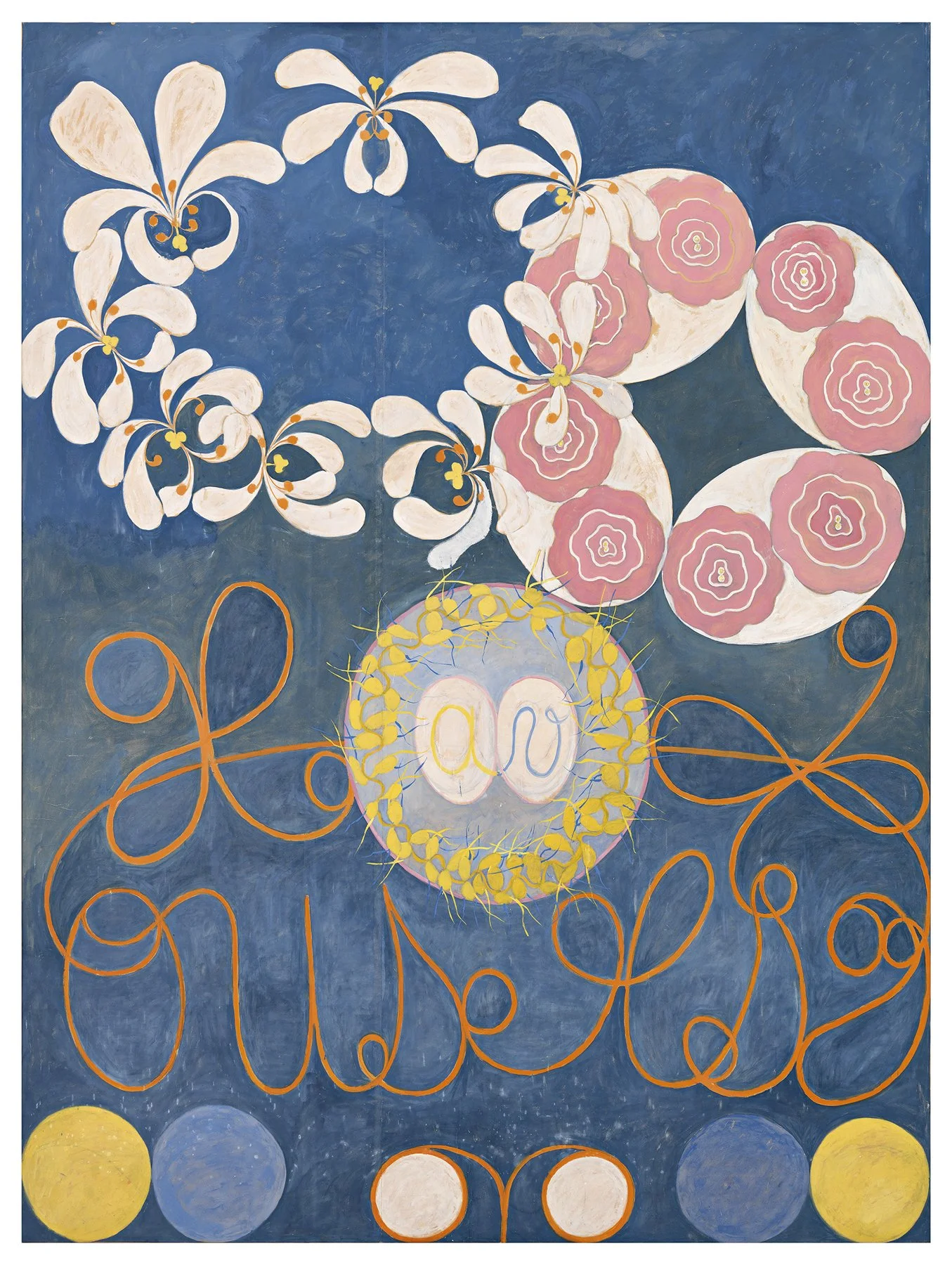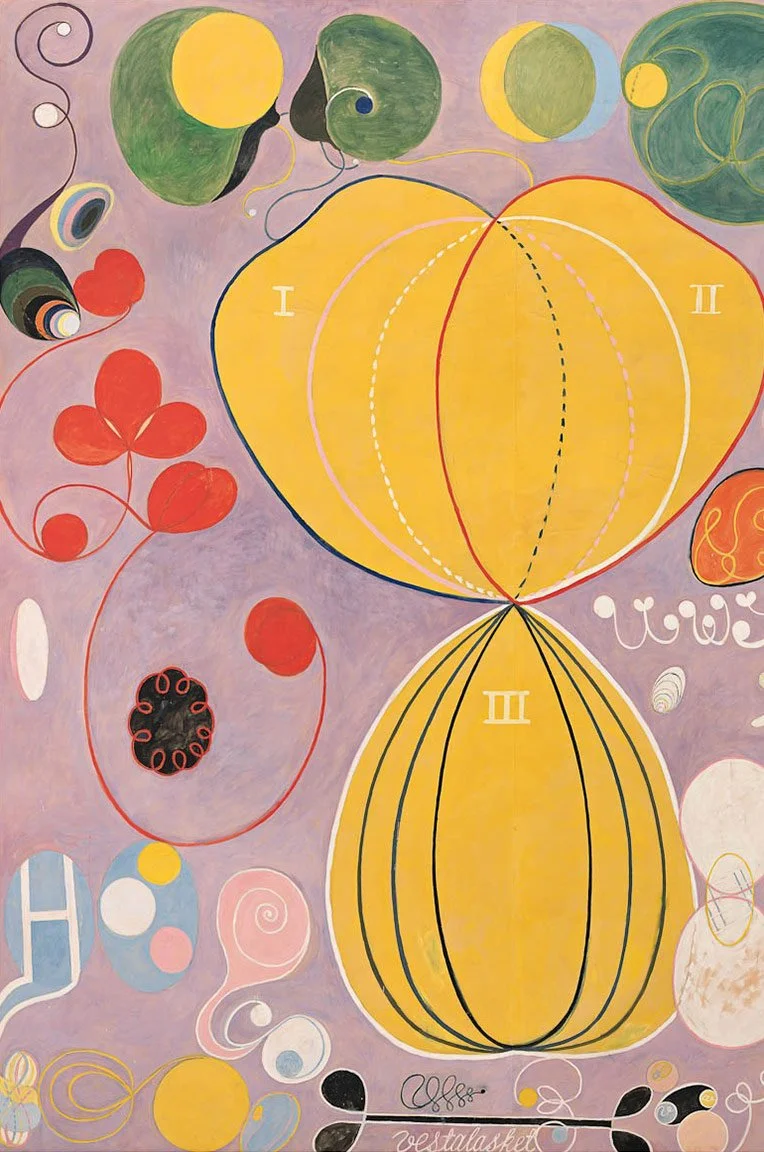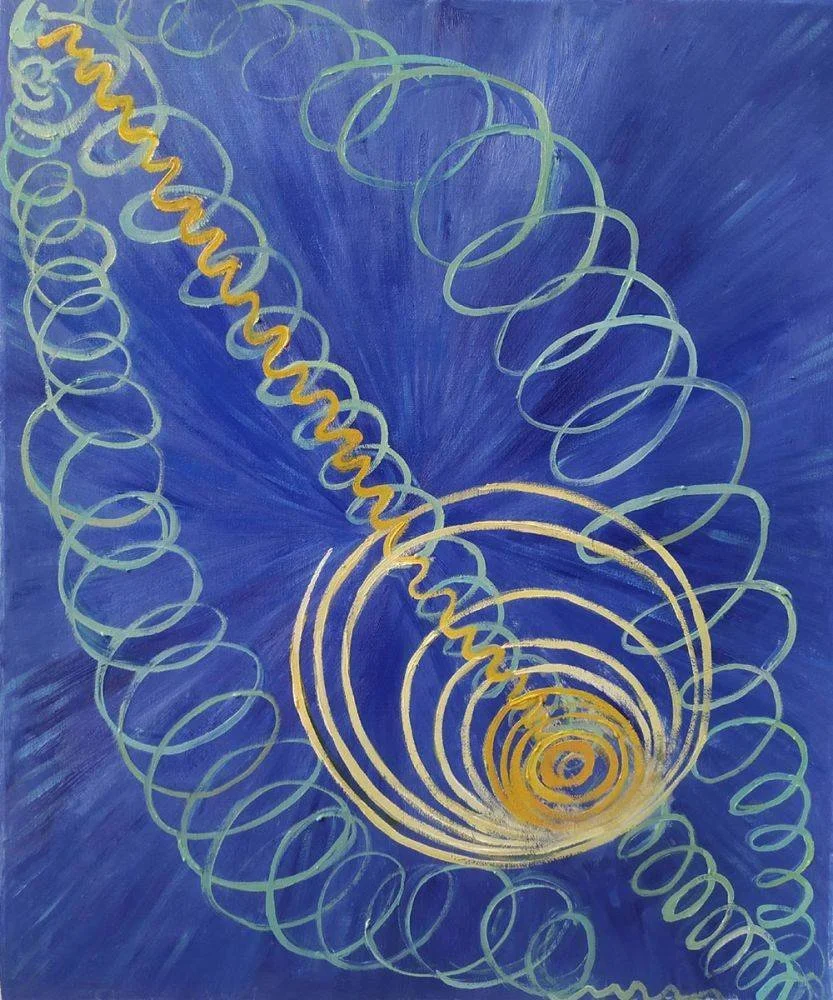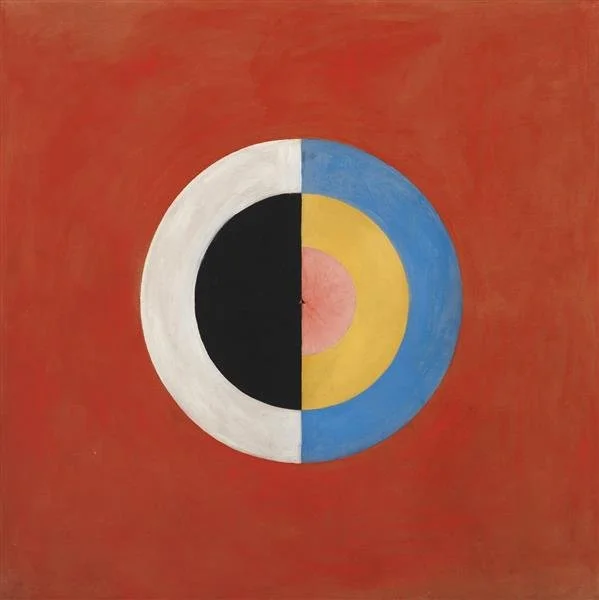Hilma af Klint: Painting in the Spiritual Realm
Words by Otty Allum
When people asked me who my favourite artist is, I used to always say that I don’t have one, that although I may love one particular artwork by an artist, their other work may not appeal to me or I fail to connect with it. But then I found out about Hilma af Klint; not only is her work visually and aesthetically striking, it is also enigmatic and proclaims to possess hidden ideas about the metaphysical world.
Hilma Af Klint in 1901
Hilma Af Klint was born in Sweden in 1862, she always showed artistic ability throughout her life and possessed a great interest in botany. Af Klint studied at the Royal Academy of Fine Arts in Stockholm during her early 20s, in fact she was one of the first women to attend the school. Throughout her life she gained recognition for her botanical drawings, portraits, and landscapes from which she made her living. As a teenager she gained an interest in the occult, exacerbated by the death of her sister Hermina in 1880; from then on, she began to attend seances. Spiritualism was very popular at the turn of the century; in 1889, the Swedish Theosophical Society was established, of which Af Klint became a member. Theosophy was a 19th Century occult religion, the word ‘theosophy’ essentially means ‘divine wisdom’, the movement emphasised the experience of spiritual encounters which they believed could heighten the human consciousness.
The Ten Largest, No. 1, Childhood (1907) by Hilma af Klint
The Ten Largest, No. 7, Adulthood (1907) by Hilma af Klint
In 1896 Af Klint created the Friday Group with four other female artists, they met every Friday for seances and spiritual meetings, here they engaged in automatic drawing and writing. Automatism was a practice that was eventually taken up by the Surrealists. They made contact with spirits which they called the High Masters, the women recorded many notes of their experiences. Her spiritual encounters had a profound effect on her work, most notably in 1904 when, during a séance, she heard a voice telling her to create artwork on ‘an astral plane’ in order to ‘proclaim a new philosophy of life’. In 1906 she began to paint the 193 artworks intended for a Temple under the guidance of the ‘High Master’; “I had no idea what they were supposed to depict… I worked swiftly and surely, without changing a single brush stroke”. From this point onwards she began painting abstract forms, her first abstract painting, ‘Primordial Chaos’ (1906) predates Kandinsky’s 1911 ‘Komposition V’ which was originally thought to be the first abstract painting. Af Klint’s artwork was not produced as part of a movement, she was not attempting to invent a new artistic style, instead af Klint was using symbols, shapes and colours to convey the presence of a world that existed beyond the physical.
Komposition V 1911 by Wassily Kandinsky
Primordial Chaos 1906 by Hilda Af Klint
Through her experiences documenting her seances, Af Klint developed her own visual language that was able to express abstract ideas and concepts pertaining to the metaphysical world. Her work began to explore the scientific innovation and discovery that was occurring at the time in Stockholm; there were lots of scientific debates, such as ideas about evolution and the activity of atoms. There were many specific symbols in her work that she used essentially as a code to convey certain messages, for example, spirals meant evolution, the colour green meant harmony, blue was ‘next to darkness’ and femininity, and yellow was ‘next to the night’ and masculinity, some of this may have also been influenced by Goethe’s 1810 ‘Theory of Colours’. A visual motif that can be found throughout her work is duality, such as the duality between male and female, Af Klint believed that everyone has a male and female persona within them, likewise, her work explores the duality within religion. Her preoccupation with duality reflects her quest for a sense of unity, this is highly evident in her work; her aim was to bring together the unseen, spiritual world with that of the physical through her artwork.
The Swan, No 17 (1915) by Hilda Af Klint
Hilma af Klint passed away in 1944, which also happens to be the same year that Kandinsky and Mondrian died. She left 1200 artworks, many of which had never been seen by another person. In her will she asked that none of her work be exhibited for 20 years following her death, and it was only in the 80s that her work began to receive any acknowledgement. Af Klint’s artwork continues to mesmerise viewers and gain wider international recognition. For me, they are more than works of art, they are secret messages about the spiritual world written using the codes of colour, shape and form. If you are interested in seeing Af Klint’s artwork in real life there is a Tate Modern exhibition of her and Piet Mondrian’s work beginning in April 2023.
Group X, Altarpieces, Nos. 1–3 (1915) by Hilma af Klint







